The truth about the Dominican chocolate
Easily you can say that the Dominican Republic is well-known for chocolate, but why is it so hard to find decent chocolate here? As my expectations weren't fulfilled upon moving here I did a little research and decided to share my experience with the Hive community.
Just to be clear with you guys, all the information I am using is based on my personal experience and all the numbers I use are based on pieces of information from professionals, cross-checked with online sources. If the numbers differ significantly, I use the median. What I describe is the production process I witnessed and was told here in the Dominican Republic and I have no relevant comparison to the way chocolate is made in other countries. All of the photos used are mine, or my wife's, some of them were previously used on our socialmedia channels, but this blog post is posted exclusively here.
Generally speaking, you won’t find many goods for export here. Some light industry exists, but the best and major export are cocoa beans. The Dominican Republic is the ninth biggest exporter of cocoa beans in the world with approximately 60 000 tons of cocoa beans per year!
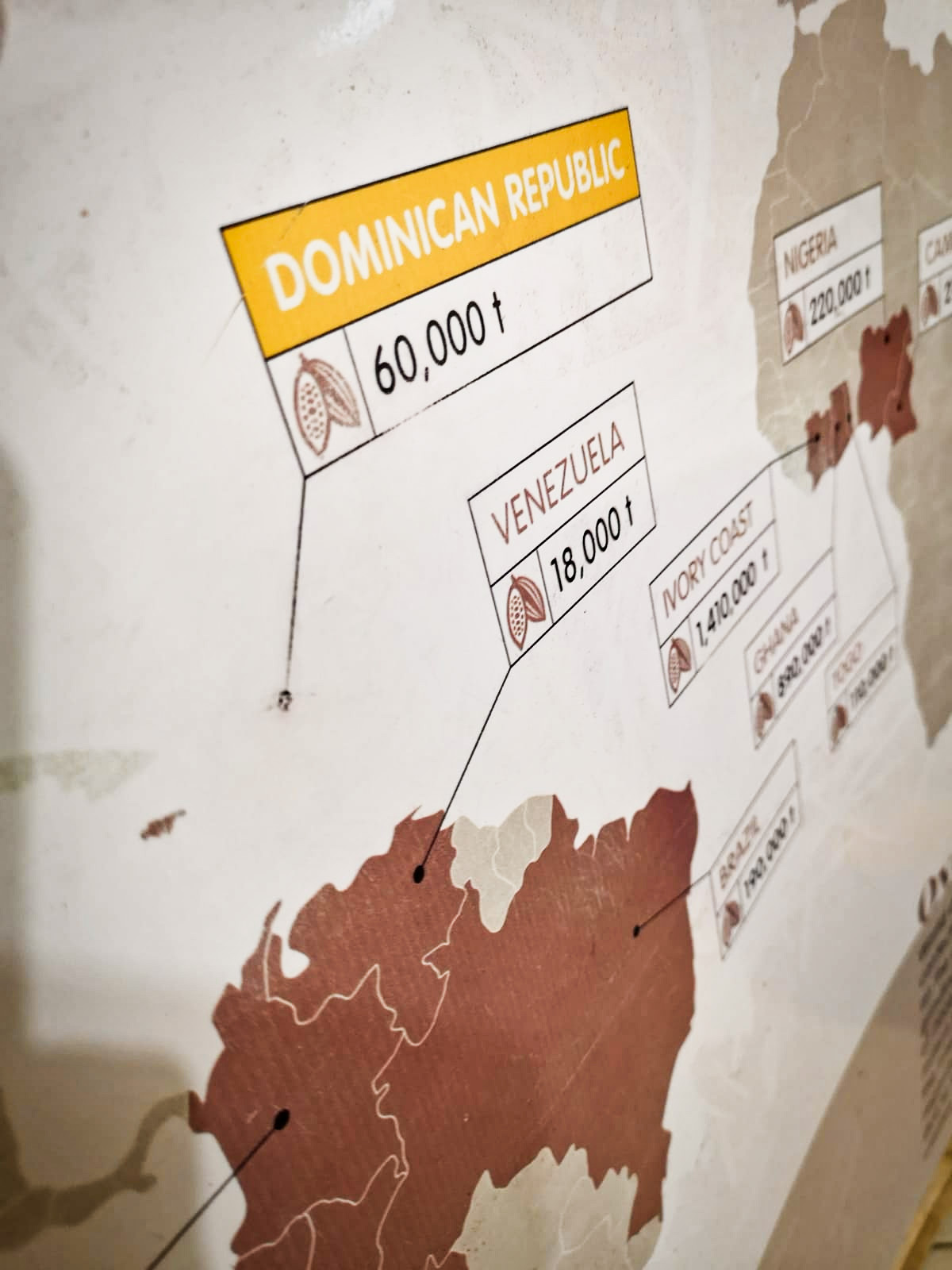
To put you in perspective with that number. The average bag of cocoa beans weighs 64.5 kg, so we are speaking about more than 930 000 bags of cocoa per year. Those bags have dimensions of 69 x 90 x 30 cm, so if you would put them all on top of each other, you would get a tower of 83 720 km, which is more than twice the circumference of the earth!
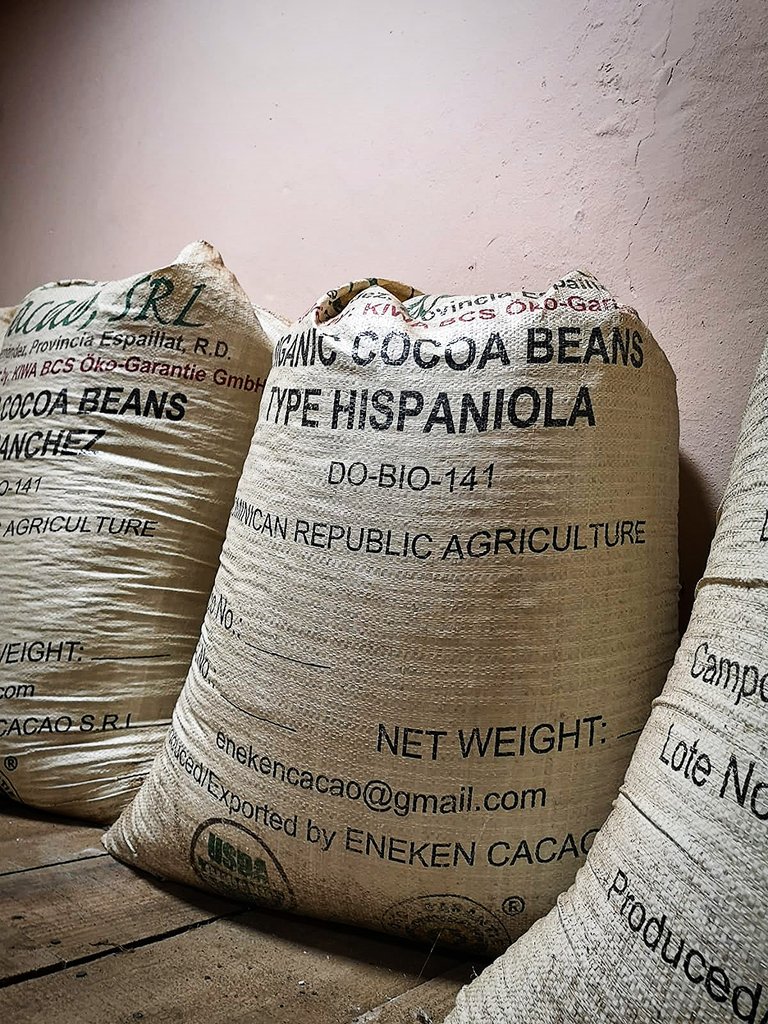
I live on the north coast and I am used to meeting cocoa trees pretty often, but still, I don’t understand where they keep all those cocoa trees. With numbers like this one would expect the cocoa island! The truth is that most of the production is concentrated in the northeast regions - provinces María Trinidad Sanchez and Duarte (alleged statistic tells 60% of the island production). Not a bad number for such a small island, isn't that true?
How the story of cocoa began
Same as sugar cane (which is fermented, distilled, and aged to deliver the rum) cocoa was brought here by Spaniards during the time of the conquest, but until the nineties, Dominican cocoa wasn’t considered quality enough. It took some changes in the production processes and deviation from the way cocoa was processed to elevate the quality. With that things changed and Dominican Republic cocoa is demanded worldwide.
Let me explain a little bit about the cocoa and cocoa trees
Cocoa trees like to grow in the shadow of other trees and plants. You can distinguish them by the specific shape of the leaves and of course the cocoa fruits. These fruits grow directly from the bark of cocoa trees in a variety of sizes and colors. Ripe fruit's color varies from yellow to violet.

Opening a ripe fruit you get some strange alien-like white slimy thing. Those are cocoa beans, being fresh my friends. With them, the story of the chocolate begins! Btw if you struggle with opening, the easiest way is to smash the fruit carefully from each side against the piece of wood, stone, or anything else solid and use force to help those little cracks open the fruit.
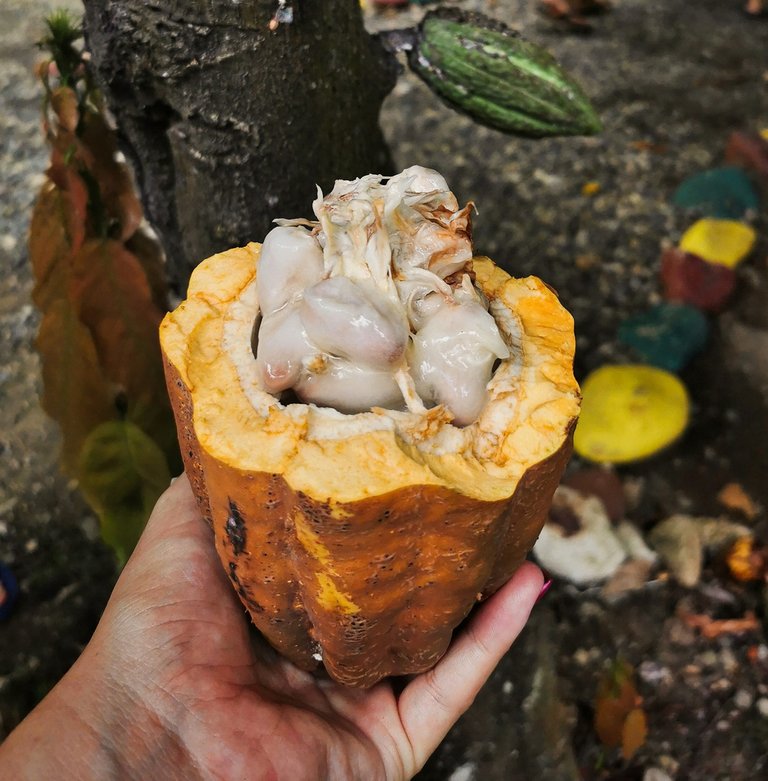
Don't be afraid to taste the fresh cocoa beans. Lots of people including my wife love them! The slimy cover of beans can feel a little bit unappealing, but they deliver a taste close to walnuts. After chewing they turn violet and you can swallow them. They don't hurt you anyhow.
If you meet those ripe fruits in nature, they are pretty easy to multiply at home - just put them to ground. I’ve already grown a few of them, just for fun. The crazy part of this is that you can grow literally anything here in the Dominican Republic, gaining multiple harvests per year. We have star fruit in the garden, and we are harvesting it constantly for the 14th month... crazy nature for Europeans like us!
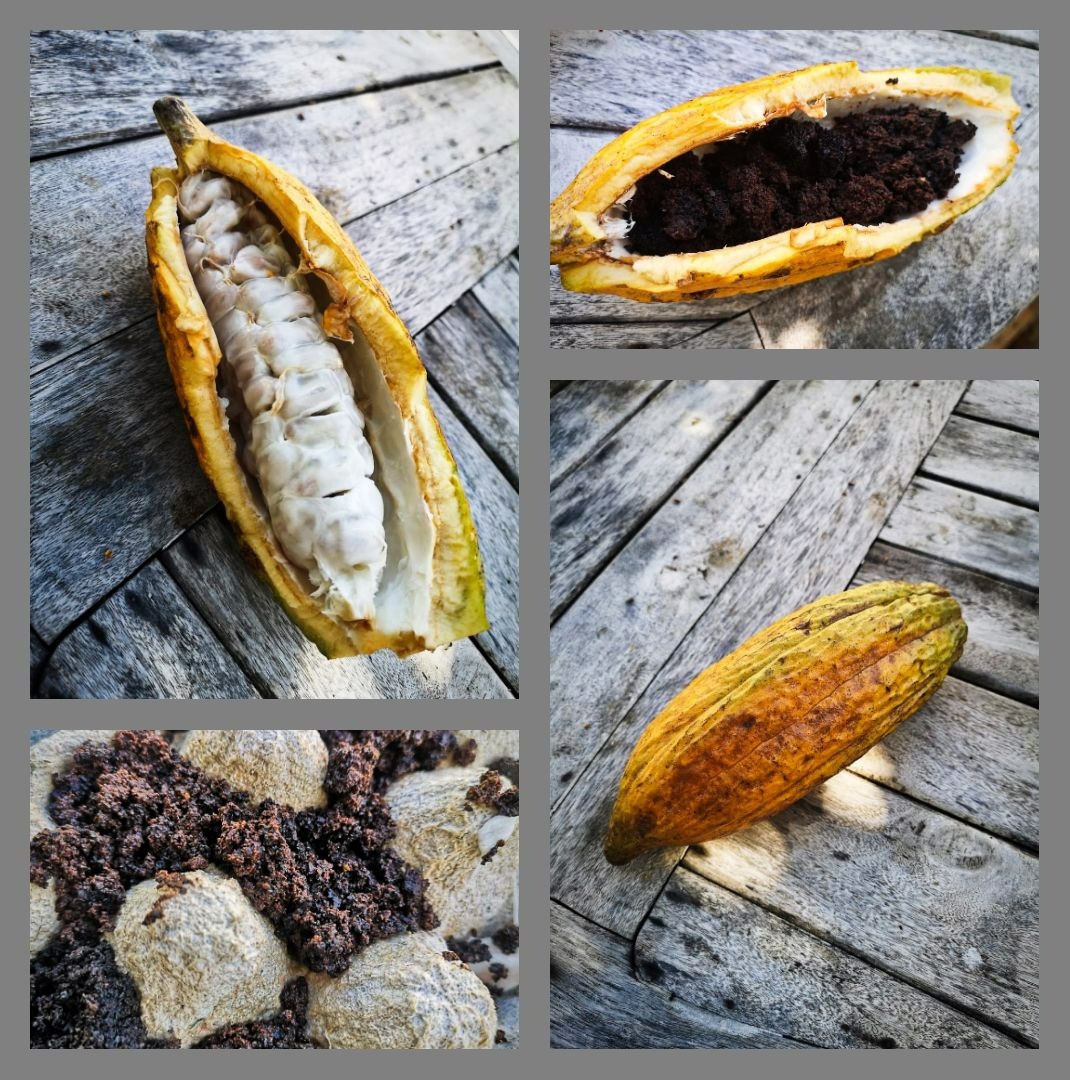
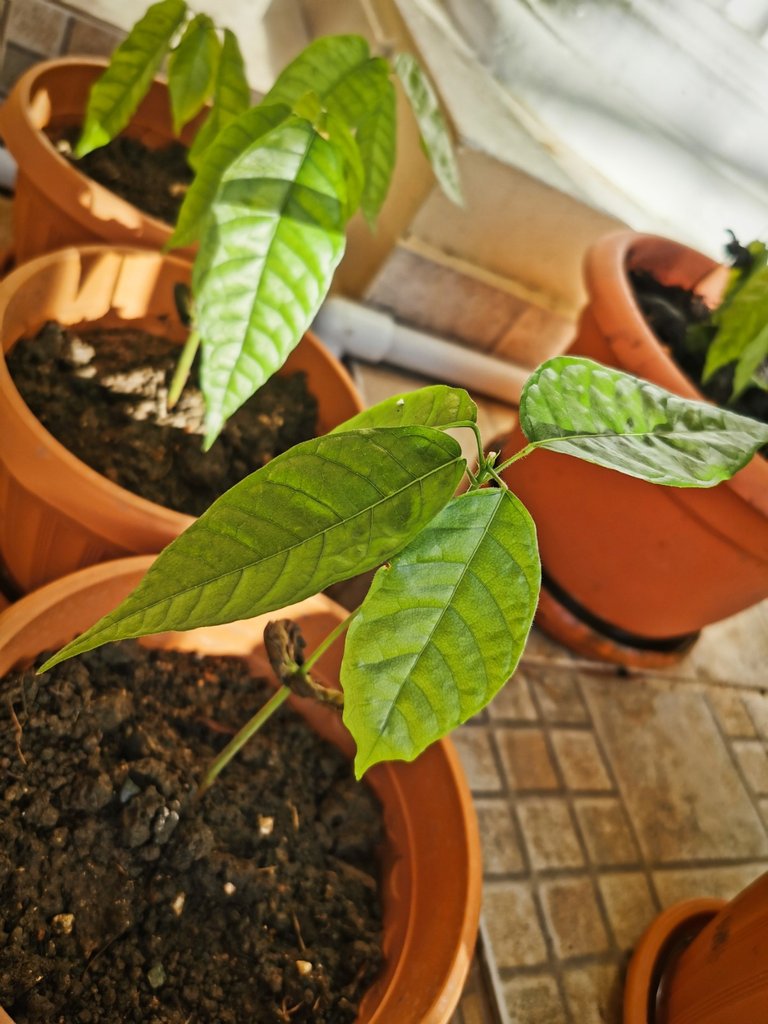

From the seed to the chocolate
Fruits were harvested and beans are taken out. This is done usually onsite, on the plantation. Empty husks are usually used as a fertilizer and put under the trees and based on the desired product, or better-said product type grade, the process of production of beans differs.
For Sanchez beans, the beans are immediately dried under the sun, and for the Hispaniola beans they are fermented onsite for 3 – 7 days.
I don’t have much experience with Sanchez beans, so I am going to explain to you how Dominican chocolate is made from Hispaniola beans.
Btw the process is fairly identical to the coffee, so those of you who know the process well, feel free to leave a comment if you’ll find some differences from the cocoa process for later relevance.

Cocoa beans are fermented in boxes like this. After they are taken out, fermented beans are distributed for sun drying. After drying they are usually put into bags and transported for further use.
Of all of the Dominican production, only 10% stays on the island for subsequent chocolate and cocoa powder production. I visited some of the chocolate factories on the island and their production to get a glimpse of how they do it here and here is my experience.
Chocolate factory
The first thing to mention. There are no huge producers on the international level. There is no Nestle or any other huge company employing hundreds of Dominicans here. Local chocolate factories are “manufacture” like places and I am going to address 3 particular chocolateries – unknown small one owned by union of women, a touristic one and most professional one that can be compared to best European standards.
Dominican republic cocoa farmers tend to unionize. This way all the small farmers can get decent prices for their cocoa. There are more than 40 000 producers, with more than 36 000 farms registered, of which around 20% of farms produce certified organic cocoa. Supposedly Dominican republic is the biggest organic cocoa producer in the World!

Fermented and sun-dried beans looking like this upon receiving in the factory are checked and roasted. Ovens are in fact same as the ones for coffee and temperature and timing are crucial for uniform results, although cocoa beans aren’t as sensitive to roasting as coffee beans. The desired result is to roast beans to the exact point that delivers the specific taste profile related to the cocoa species, local soil, and other circumstances.
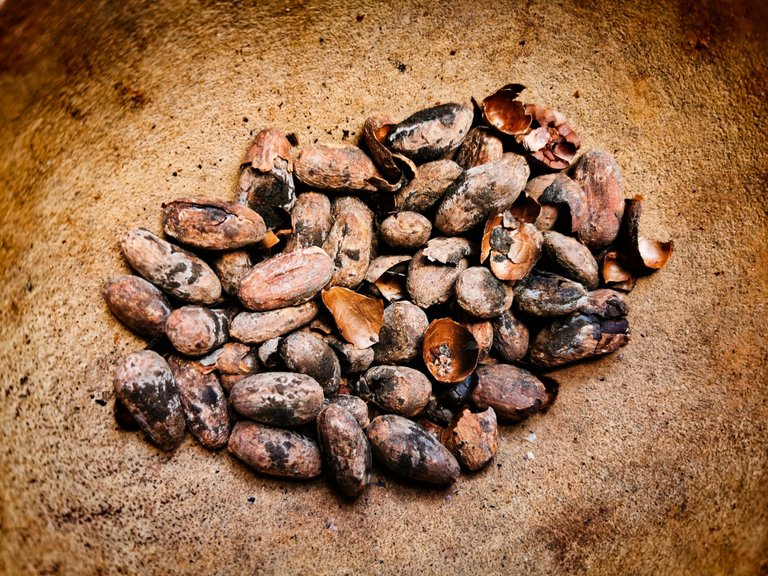
This how they look like roasted. They deliver a slightly acidic specific taste, that can be perceived best in +80% chocolates and pure cocoa powder. Because of roasting is done to the whole beans, husks have to be extracted. Some of the chocolate factories do this with machines and some by hand.
Those husks can be used for infusions. How do the roasted cocoa tea husks taste? It's a really strange sensation. It's tea, same time you can feel that roast and strange taste, that goes well with herbs. Lately, I had this fancy one, which was iced tea, mixed with lime juice, coconut cream, and mint... It's refreshing and it's supposed to work as a muscle relaxant. I felt refreshed but didn't feel any muscle relaxation, so cannot tell. But what I like about this is, that this way each part of the fruit has its use.

Regarding the process of making the actual chocolate. When roasted cocoa beans and nibs are separated from the husk, they are milled and pressed in hydraulic press-like machines. That's the moment liquid called liquor separates from the crude cocoa paste. Liquor is a brownish liquid, that has further use as on the top cocoa butter precipitates out.
Cocoa butter is used for lotions, creams, lipsticks, and other cosmetical uses, which I, like a male who washes all his body with one soap/shampoo/detergent, don't understand.
The liquor itself is later mixed with powdered milk and sugar and makes white chocolate.
The chocolate paste is further in the process being refined and tempered within the constant temperature and given time. The point is to thicken the consistency enough to make the chocolate smooth as much as possible. From that point is the process pretty straight forward, more refining, putting to form and shaking out the bubbles, and shock cooling for the final result.
Through the process, ingredients are added to achieve desired chocolate type. Mostly we are speaking about powdered milk and sugar.
Other products are made from chocolate paste, products like cocoa powder, tablets for hot chocolate etc.

So this is a basic description of the way chocolate is being made in the Dominican Republic. Usually, all of this is achieved on 3 - 5 machines in one room (with more or less hygienical standards and procedures being followed), excluding the machine for the selection of beans and husks and the roasting machine.
But is the chocolate good?
Honest answer? I don't know. The chocolate is completely different than I was expecting. The chocolate here tends to be cruder with a strange greasy sensation. I was told that this is made by procedure and ingredients added, as producers want their chocolate to survive local heat.
Problem is, that there is no local market for domestic chocolate! Locals prefer to buy imported brands like Hershey's, Milka, and Toblerone and only ones buying local chocolate... ARE THE TOURISTS!
We are no exception, although we like to buy products from chocolate factories, but we choose other treats than chocolate. In my humble opinion, chocolate factories here should concentrate more on the other products, like our favorite roasted cocoa beans, covered in cocoa powder.
To show you the whole picture and see the difference
I am going to show you three completely different chocolate factories and make your opinion about their approach and products.
CHOCOLALA This is a small place we often bring our friends to visit us. It's a small manufacture-like chocolate factory owned by a small women-only union. They grow their own cocoa and they buy local cocoa from the local union. They buy fermented beans, but also they do their own fermentation. After roasting all of the roasted beans are HAND PICKED from husks. They produce a variety of other products and what I really love there is the wide variety of fruit wines. My favorite one is from chinola - the local name of passion fruit. Upon arrival at the place and paying the entry fee of 5 USD you get a tour around the premises, cocoa orchard, and the factory and you get to try all of their chocolate, hot chocolate, other cocoa-based products, and fruit wines. Never in my life have I had a chance to taste wine made from cocoa, just here! Be aware of one thing - they speak only Spanish there!

This how Chocolala chocolate factory looks like. To the right, you can find a big cocoa orchard.

Me taking a walk in that orchard.

My wife's hand while drinking hot chocolate and Cecilia from Chocolala explaining their products in the background.
PROS:
- local vibe
- local bio products
- buying anything there directly supports employees
- chinola wine
- roasted cocoa beans, covered in cocoa powder - TOP
CONS:
- chocolate is OKayish, nothing that shoots you to the moon
DEL ORO This place is, in fact, built around the souvenir shop, on the other hand, is within Puerto Plata and there is no entry fee. Upon arrival, you'll get to taste their brownie and hot chocolate in milk. You get to watch a quick movie about their brand and the process of making their chocolate and later they'll show you machines for chocolate. Then in the souvenir shop, you taste all of their chocolates, their variant of Nutella, which is really good btw, as they make if from peanuts (just don't be allergic please!), and then you can browse their shop with really questionable prices.

Entry to to Del Oro Chocolate factory

Some of the chocolates Del Oro has to offer.
PROS:
- free
- local Nutella
- doesn't take more than 20 minutes
CONS:
- really touristic
- it's visible that the whole concept is aimed at the tourists from cruise ships - doesn't suits everybody
- worst chocolate from the presented chocolate factories (imho)
KAH KOW The strange name of the brand should mean cocoa and know-how. It's the brand of a local cocoa company - Rizek cacao. First of all, these guys know how to make chocolate and in my opinion, there is not a better chocolate place on the island. Just be careful where you visit them, because the experience may slightly differ. I love their shop in Santiago and I dislike the shop in Santo Domingo. The reasons for that come from my experience, but to be honest, those two places are completely different.
Their main production is in Santo Domingo and their branch in Zona Colonial is situated within the old colonial building, decently touched with modern reconstruction and a big glass cube inside the building which holds the production. Really cool place, but... it's Zona Colonial guys... and we are gringos... expect to be offered a tour of chocolate production, expect to make your own soap and tourist stuff like this... and expect to pay a lot for that.
There is a small shop there with its exquisite pralines and truffles. But do you know what? I like the quality better in Santiago. Don't know what they do differently, maybe the temperature... But Santiago got me better.
Anyway, be sure to try their praline with pistachios, as they are filled with something close to pistachio butter with salt. Dark chocolate in combination with that is unbelievable and will shoot you to the moon.
Regarding hot drinks they offer. All of the are a blast. Their hot chocolate is mouth full with really careful preservation of the taste profile of the Dominican chocolate. This is the place to visit and the products to buy to finally taste HOW Dominican chocolate should taste. Only downside is the price. Expect one cup of hot chocolate cost you like local lunch.
We always have a big table of 82% chocolate from their company at home, as it's one of the best chocolates I ever had. Btw the package is 500g.

Santiago shop and all those delicious pralines and truffles.
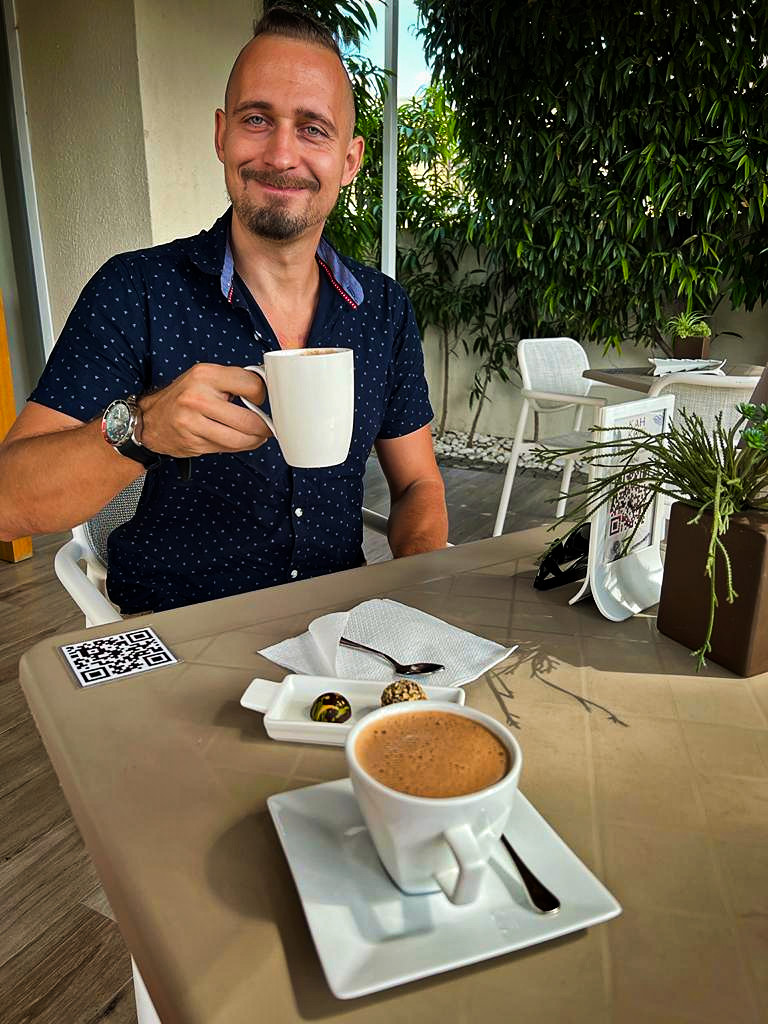
Me being the happiest person in the world, drinking delicious hot chocolate.

Santo Domingo shop named KAH KOW EXPERIENCE
PROS:
- best chocolate comparable to best standards
- pralines and truffles
- hot drinks
CONS:
- price
- Santo Domingo shop is touristic
So guys. Thank you very much if you made it here. I hope this actually gave you something rather than a headache from the long text. Feel free to ask me about anything regarder to the topic of the Dominican republic chocolate industry and I will be glad to answer you, if in my power.
TLDR: The Dominican republic exports lots of cocoa and only a little bit stays here for the local market. The process of making chocolate is pretty simplified and chocolate tastes differently. Dominicans prefer imported brands of chocolate rather than domestic production. There are different chocolate factories with different products and aims, some of them touristic, some of the authentic.






